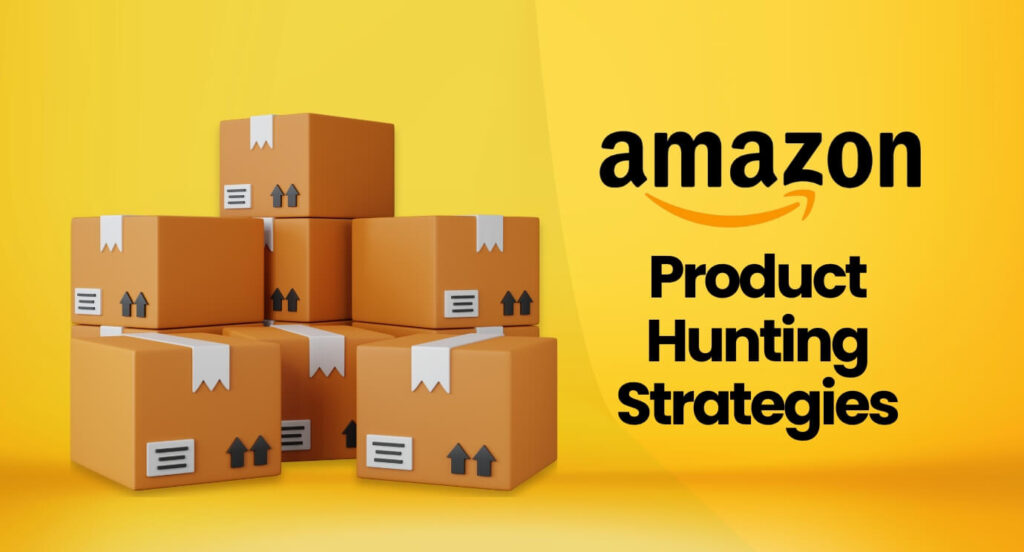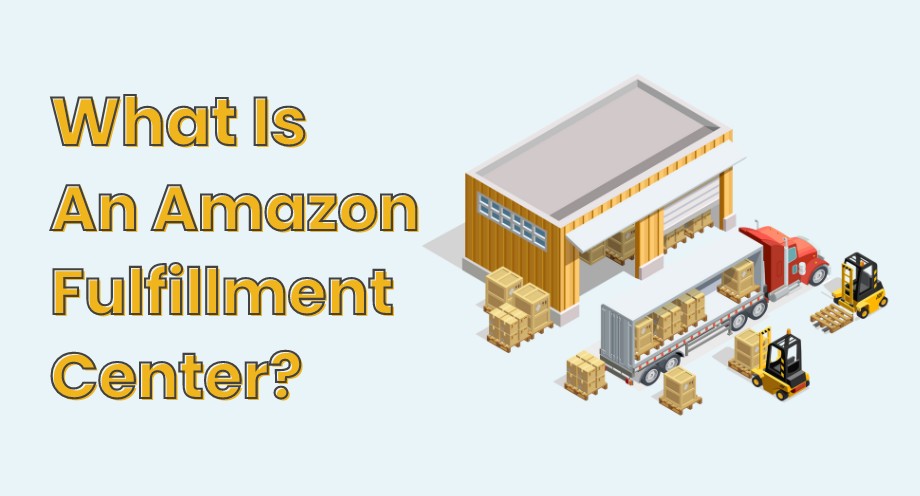

The first step in launching an Amazon FBA private label is to identify what is right to sell. For Amazon sellers, Amazon product hunting—also called product research—is crucial to the success of their business. The success or failure of your FBA storefront is directly related to the products you sell.
Both manual searching and the use of product research tools like Jungle Scout and Helium 10 are possible choices for Amazon product customers. These days, Amazon’s product hunting software is the go-to for most sellers. Nonetheless, it’s smart to undertake a manual search in conjunction, because this can help you discover unique products and verify them by hand.
What is Product Hunting?
Product hunting on Amazon means finding profitable items to sell online, especially through e-commerce and platforms such as Amazon. These products are in great demand and face little competition. It involves searching for items with low competition and high sales potential by examining profitability, consumer demand, market trends, and competition. When sellers use effective product hunting strategies, they select items with the potential to consistently earn high profit margins.
Products with a winning track record sell like hotcakes. So, you won’t need to persuade site visitors that the products you’ve chosen for your store are wonderful; they already know that. To get people to buy from your store, you need to focus on exhibiting (making stories about) and advertising your product listings.
Also Read: How Much Investment Required for Amazon FBA in Pakistan?
9 Best Amazon product hunting strategies to consider
You might not know where to begin the Amazon product hunting. Where should I start looking for hot selling products’ keywords? Which category and niche should I choose? etc. You still might not know which products are good when you discover your niche and begin searching for them. That’s why it’s so important to understand what factors contribute to a product’s hunting success.
1. Minimal Competition And High Demand
By definition, a successful product is one that has low levels of competition and high levels of demand. You can’t afford to ignore these two aspects because they decide the fate of your product(s).
So, your product’s sale on the Amazon platform is directly proportional to its demand. Because there is such a large market for a product, one with high or even medium demand is therefore more likely to be sold than one with low demand.
Thus, the level of competition affects how quickly your product sells. Having fewer competitors increases your chances of making sales, whereas having more competition decreases them. Therefore, in a highly competitive market, there is no guarantee that you will be successful if you put effort and money into advertising your product to attract potential customers. That’s why, give your best in Amazon product hunting to find the product with more demand and low competition.
2. Monthly Revenue And Unit Sales Volume
Always keep the average revenue and monthly unit sales in mind when you’re doing Amazon product hunting. Products with an average monthly income of more than $5,000 are your sweet spot. This benchmark guarantees a suitable level of profit potential and demand. Products with monthly sales of less than 300 units can also be a good target.
If you want to make a good amount of sales while keeping your profit margins healthy, strike a balance between high revenue and modest sales volume. In the end, this strategy improves your product’s chances of being noticed in the market and bringing in regular profits.
3. Check The Volume Of Keyword Research
One of the best Amazon product hunting strategies is to look for the keyword search volume for the winning products. It shows how interested people are in purchasing that product. You have a better shot of selling an item on Amazon if more people search for it.
Take, for example, a search for “Home and Kitchen Category” that pertains to interior decorating.
- The search term “Home decor products” will bring up a huge list of generic items.
- Utilizing a more narrow phrase like “wall home decor” in your keyword research may help you find products with less competition.
- However, if you narrow your product hunting to “Wall basket home decor,” you’ll find the perfect products to sell because you won’t see lot of competition for certain products, but they have high sales volume.
4. Evaluate The Selling Price And Profit Margin
There are a lot of inexperienced Amazon sellers who list their products at rock-bottom prices because they don’t consider the FBA costs. That’s why they face failure later in business. So, you must use the Amazon revenue calculator to determine the optimal pricing for your product(s), and remember this when you analyze the product’s selling price.
So, take into account the product’s sourcing price and FBA costs as well before setting a price between $30 and 50. By doing so, you can sell your products at an affordable cost while still generating a healthy profit.
5. Relatively Low Seasonality
Seasonal products are perfectly fine, with the exception that they are in high demand during a specific season. As a result, you can’t count on demand year-round. That is why it is wise to hunt products on Amazon that are purchased and utilized year-round.
Google Trends is a great tool for determining when a product is most popular. To view the results, just type in the product’s keyword, your marketplace (country), and hit Enter.
7. Choose a product Reviews less than 500
When it comes to product sales, customer reviews are king. They reassure new customers and serve as social evidence of the product’s quality and satisfaction levels. A higher conversion rate is associated with a product with more positive reviews, and vice versa.
If you are doing Amazon product hunting for high-quality products, our suggestion is to look for items that have fewer than 500 reviews. This will give your product a better chance to shine. You won’t stand above your competition if you go for a product that has 500–5,000 reviews because it reveals that a lot of people buy it from your competitor.
The rating of the product is just as important as the number of reviews. To ensure you buy high-quality products, look for reviews with at least 4.5 stars.
7. The Reliability Of The Product
Let’s suppose you find an amazing product that meets all the requirements listed above, but when you launch it on Amazon, it doesn’t work as intended. Where did I go wrong??
Its performance may have declined due to a variety of factors. Perhaps there has been a shift in demand, an extensive number of competing sellers offering identical products, or perhaps the product’s keywords have changed since you first launched it.
That’s why, in addition to the above considerations, monitoring the product’s performance over time—say, every two weeks—is crucial.
8. Select Small And Lightweight Product
Selling a compact and lightweight product is a wise move because it will lower your FBA costs, referral fee, storage fee, and other expenses as well. Amazon sellers starting out with large, heavy products have it tough due to increased warehouse and shipping costs.
Therefore, one thing to consider during Amazon product hunting is to choose a product under 1 lb in weight with small dimensions. Obviously, this is niche-specific. So, try to pick products that are as small and light as possible, no matter what niche you’re in.
9. Check Seller’s Rank
Finally, think over the seller’s rank; it shows how popular and profitable the product is. Products with a seller rank below 40,000 in the past 90 days are an excellent option if you’re looking for something with less competition. You could be the next major player in selling that product, even though it’s already quite popular.
Which tools are used for product hunting on Amazon?
Sellers can find profitable items to sell on Amazon with the help of a number of popular product hunting tools, each with its own set of advantages. Among the most popular ones, here are a few:
1. Jungle Scout
Among the best tools out there, Jungle Scout delves deep into product demand, competition, and sales projections. The Product Database, Opportunity Finder, and Chrome Extension are some of the features that might help you streamline your Amazon product hunt.
2. Helium 10
Product research, keyword research, and listing optimization are just a few of the many features offered by Helium 10. Its Black Box function shines when it comes to discovering promising products based on certain criteria.
3. AMZScout
With AMZScout, you may get reliable product rankings, sales forecasts, and profitability reports. To help sellers make knowledgeable decisions, it comes with features like the Product Database and the Pro Extension.
4. Keepa
Keeping tabs on product prices and sales ranks has never been easier than with Keepa. Market volatility can be better understood and stable, high-demand products can be more easily identified with the use of this Amazon research tool.
5. Unicorn Smasher
You may do some basic product research with this free tool Unicorn Smasher. It has features like sales forecasts, revenue estimates, and competition analysis. It’s an excellent place for new vendors to begin.
6. MerchantWords
Sellers can use MerchantWords, a keyword research tool, primarily, to locate lucrative product niches by discovering high-performing phrases and analyzing search trends.
7. Sellics
Product research, keyword optimization, and PPC optimization are all part of one cohesive platform. With Sellics‘ Product Detector tool, you can find products with a lot of promise by analyzing the market thoroughly.
With the help of these Amazon product hunting tools, Amazon sellers may be able to identify products more quickly, learn more about the market, and boost their chances of making a sale.
Also Read: How To Make Amazon Seller Account In Pakistan?
Final Thoughts: Maximize Your Amazon Product Hunting With Us
You can’t improve your Amazon product hunting efforts without combining manual research with Amazon product research tools. You will gain more complete and insightful information from this dual approach. By combining the two approaches, you can find items that meet your specific needs and seize opportunities that other vendors might miss. Spending a lot of time on this procedure (doing manual research and analyzing data from research tools) is definitely worth it. You have a better shot at discovering market-leading products using this method because of its depth. To get even more out of your Amazon product hunting strategies, it’s a good idea to talk to ecommerce experts like Munir Ahmad or a digital marketing agency in the UAE. Their knowledge and experience may simplify your product hunt and guide your decision-making, increasing your chances of success on Amazon.

